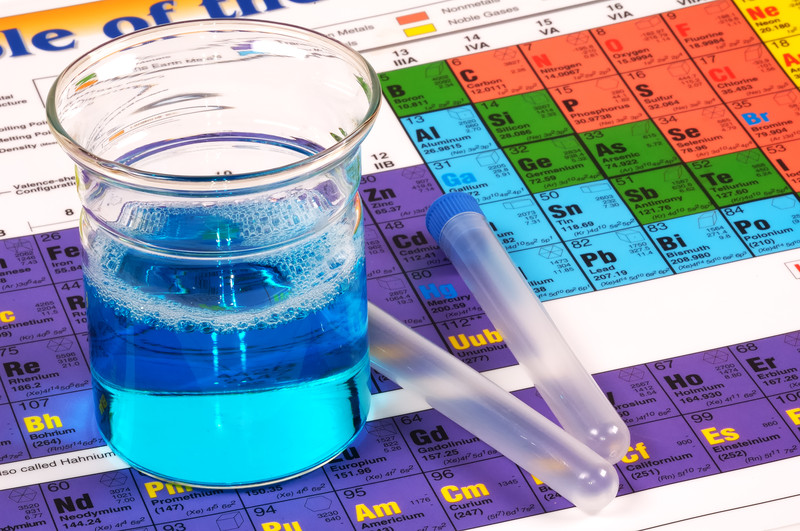This is the absolute best, most complete Chemistry course designed for kids who not only want to learn what chemistry is by doing it themselves, but also have greater ambitions and need to know this chemistry stuff so they can get paid in the real world to mix up rocket engine chemicals, design chemical factories, develop new kinds of substances in a lab and so much more.
This course will not only prepare you for the real world in chemistry, it will also give you more than a solid foundation when you hit the college level. You can save time and money by finishing part of your college degree right alongside your high school work by testing out of classes using this chemistry course. You don’t have to be a genius in order to do this – anyone can do it that works through this course, and I am here to help you every step of the way.
Beware! Chemistry does contain some math. Now before you panic or roll your eyes, note that you don’t need a high level of math in order to complete this course. I am going to walk you through every step of the way, and it’s best if you learn the math right alongside the science so that you can really understand why you’re learning that math stuff in the first place.
We’re going to be mixing up dinosaur toothpaste, doing experiments with catalysts, discovering five different states of matter, and building your own chemistry lab station as we cover chemical kinetics, phase shifts, the states of matter, atoms, molecules, elements, chemical reactions, and much more. We’re also going to turn liquid polymers into glowing putty so you can amaze your friends when it totally glows in the dark. AND make liquids freeze by heating them up (no kidding) using a scientific principle called supercooling.
Technically, Chemistry is the “scientific study of matter, its properties, and interactions with other matter and with energy”. What is THAT? Basically chemistry is studying matter, like baking soda, and watching what happens when you add vinegar to it. Did it change color? Did it heat up? Did it make bubbles or form crystals? What happened? Watching and explaining are all a part of chemistry. Let’s get started!
Step 1: Download the overview worksheet for the course.
Please note that this materials list is for the entire course, including the Chemistry 4, 5, & 6 which has not yet been released! You’ll want to go through the experiment videos and highlight the materials you’ll need to get from the master list at the link above.
I’ve prepared a special worksheet download that goes with video #3 below. This video covers the fundamentals of chemistry, and you can fill in the worksheet as we go along.
Step 2: Download the shopping list for the course.
The first page contain items ordered online, and the rest are items you have around your house or you can pick up from stores in town. If you prefer, here’s the same list in the original Excel file format here.
This unit on Chemistry is chocked full of demonstrations and experiments for two big reasons. First, they’re fun. But more importantly, the reason we do experiments in chemistry is to hone your observational skills. Chemistry experiments really speak for themselves, much better than I can ever put into words or show you on a video. And I’m going to hit you with a lot of these chemistry demonstrations to help you develop your observing techniques. If you don’t have access to a chemical or can’t do a particular experiment, just watch me do it on video so you’re clear about what’s really going on.
We’re going to be using real chemicals, some of which are corrosive, hazardous, and most are toxic. This course is NOT for small children or households with loose pets. As you gather your equipment for this section, please keep ALL chemicals out of reach and sealed until you need them. We’ll show you how to safely store, mix, and clean up your chemicals. You can order all your chemicals from the same supplier (links provided in the material list). We’ll be using this set of chemistry equipment and chemicals for the entire course. Make sure you have goggles and gloves for all experiments, and protect your table (put it near a window for good ventilation) with a thick plastic tablecloth.
Step 3: Watch videos #1-4 below in order before you start course.
You can jump around within this course, however it’s important to watch the first four videos below in order before you launch into the course. There’s about 130 videos, 53 of which are instructional content videos, and the rest are chemistry experiment videos, and they are both interspersed together so you get to do experiments as you learn about the concepts and academics at the same time.

Lessons:
- Lesson 1: Introduction to the Course
- Lesson 2: Basic Safety Information
- Lesson 3: Chemistry Teleclass Lesson
- Lesson 4: Chemistry Review
- Lesson 5: Measuring Chemicals and Converting Units
- Lesson 6: Converting units
- Lesson 7: Density Column
- Lesson 8: Salty Eggs
- Lesson 9: Water Purification
- Lesson 10: Thermometers and Temperature
Quick Links: Volume 1-1 Volume 1-2 Volume 2-1 Volume 2-2 Volume 3-1 Volume 3-2
Please login or register to read the rest of this content.
